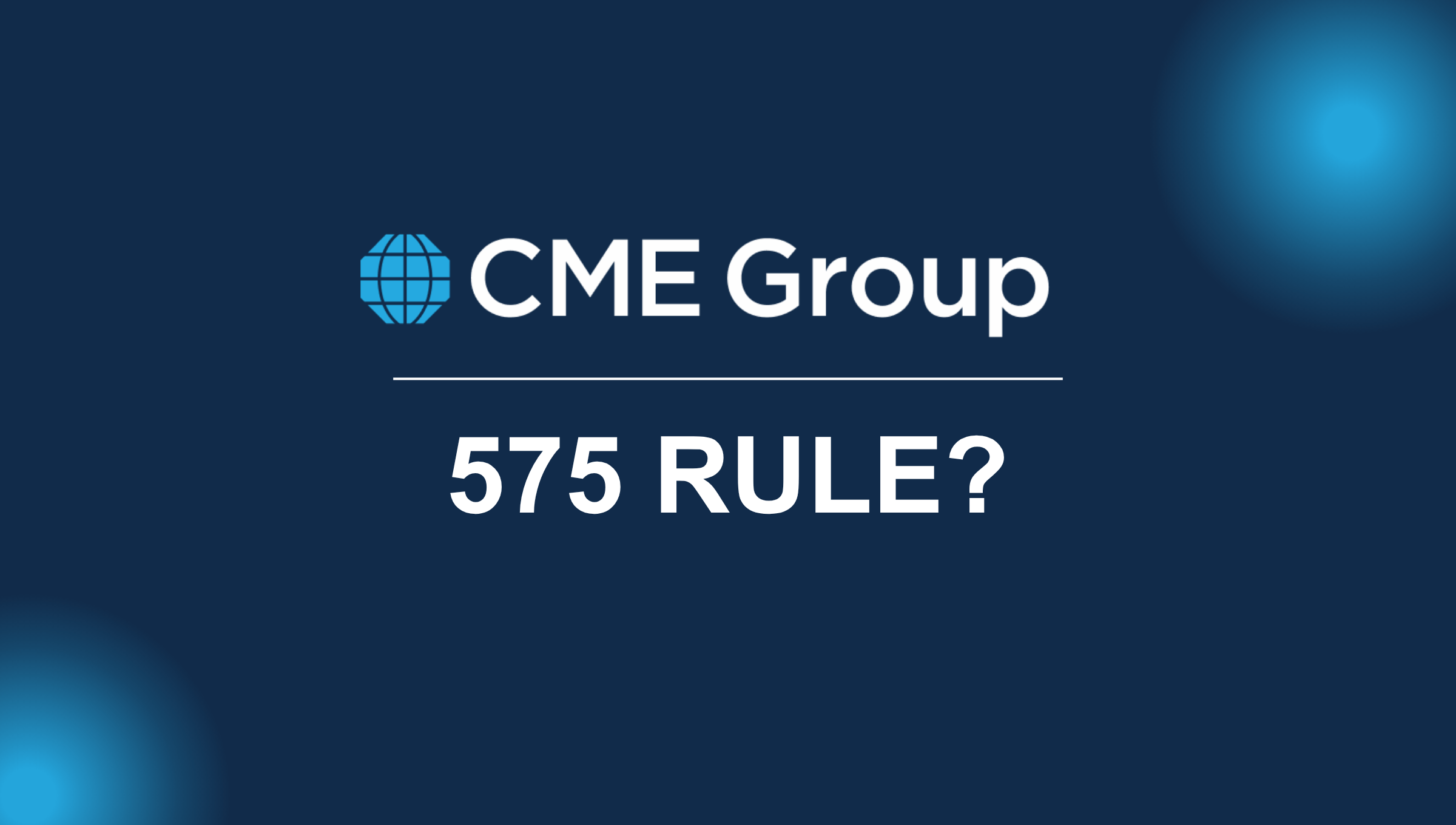CME Rule 575: Why Your Automated Trading Strategy Could Get You Banned
CME Rule 575 prohibits spoofing, quote stuffing, and disruptive trading. Learn how automated traders can avoid violations that result in bans, fines, and criminal prosecution.

If you're running automated strategies, whether via CrossTrade, custom algos, or any other automation, you need to understand CME Rule 575. This regulation prohibits "disruptive trading practices," and violations can result in permanent bans from CME markets, six-figure fines, and even criminal prosecution. For the average trader, there is no cause for concern, but its still important to understand the rules that govern automated trading.
Unlike some exchange rules that are vaguely enforced, Rule 575 has serious teeth. The rule was adopted in September 2014 to codify specific types of disruptive order entry and trading practices, including spoofing, quote stuffing, and conduct that disrupts orderly trading.
What is CME Rule 575?
Rule 575 states that all orders must be entered for the purpose of executing bona fide transactions, and all non-actionable messages must be entered in good faith for legitimate purposes.
The rule prohibits four main categories of conduct:
1. Spoofing
Entering orders with the intent, at the time of order entry, to cancel the order before execution or modify the order to avoid execution.
Real-world example: You place a large sell order to make the market look weak, intending to cancel it before it fills. Other traders see the "selling pressure" and start selling. You cancel your order and buy at the now-lower prices.
2. Misleading Messages
Entering actionable or non-actionable messages with intent to mislead other market participants.
This includes creating false impressions of market depth, interest, or direction.
3. Quote Stuffing
Submitting or cancelling bids or offers to overload the quotation system of the exchange or to delay another person's execution of trades.
Real-world example: Flooding the exchange with thousands of orders per second to slow down competing algorithms or create system delays.
4. Disruptive Conduct
Entering actionable or non-actionable messages with intent to disrupt, or with reckless disregard for the adverse impact on, the orderly conduct of trading or the fair execution of transactions.
This is the catch-all provision. Even if your conduct doesn't fit the specific definitions of spoofing or quote stuffing, if it disrupts the market, you can still be violating Rule 575.
How CME Proves Intent
Here's where it gets tricky. Proof of intent is not limited to instances where a market participant admits their state of mind. Where the conduct was such that it more likely than not was intended to produce a prohibited disruptive consequence, intent may be found. Claims of ignorance or lack of knowledge are not acceptable defenses.
In other words:
- You don't need to admit you were spoofing for CME to prove it
- "I didn't know" won't save you
- Your trading patterns speak for themselves
Common Violations for Automated Traders
The Flipping Strategy
A trader enters a large buy order at the best offer price, trading opposite resting sell orders, which results in the remainder of the original order resting first in the queue at the new best bid. Other participants join behind them in the queue. The trader then enters a large sell order into their now resting buy order at the top of the book, using Self-Match Prevention functionality to cancel their resting buy order so their sell order trades opposite the other participants who joined the queue.
This is explicitly prohibited and will get you banned.
Algorithm Malfunctions
A trader designs an algorithm for use in a very liquid market but subsequently uses the algorithm in a very illiquid market without making amendments. The algorithm gets stuck in a looping pattern responding to itself and causes pricing aberrations.
Even unintentional disruption can violate Rule 575 if it shows reckless disregard.
Layering
Placing multiple orders at different price levels with the intent to cancel them once your real order executes. This creates a false appearance of market depth.
Pre-Opening Manipulation
During the pre-opening period on CME Globex, placing orders designed to manipulate the indicative opening price and then canceling those orders before the market opens.
What About "Fat Finger" Errors?
An unintentional, accidental, or "fat-finger" order will not constitute a violation of Rule 575, but such activity may violate other Exchange rules.
So if you accidentally enter 100 contracts instead of 10, you probably won't get charged with spoofing—but you might still face other penalties.
How Long Should Orders Stay in the Market?
There's no magic number. CME Market Regulation generally will find the requisite intent where the purpose of the participant's conduct was to induce another market participant to engage in market activity. There is no specific amount of time an order should be exposed to demonstrate that it does not constitute a disruptive practice.
The focus is on intent, not duration. However, orders that are cancelled within milliseconds repeatedly are going to draw scrutiny.
Real Consequences
Rule 575 violations result in:
- Fines ranging from tens of thousands to millions of dollars
- Suspensions from CME markets (temporary or permanent)
- Criminal prosecution under the Dodd-Frank Act
- Reputational damage that can end your trading career
The CFTC treats spoofing as market manipulation, which is a federal crime.
Protecting Yourself as an Automated Trader
1. Understand Your Algorithm's Behavior
Test extensively in simulation before going live. Know exactly what your algo does in different market conditions.
2. Monitor Your Order-to-Fill Ratio
If you're canceling 99% of your orders, you're going to attract attention. High cancel rates aren't automatically illegal, but they will be scrutinized.
3. Document Your Trading Logic
If CME comes asking questions, you need to be able to explain your strategy's legitimate purpose. "I don't know what my algo was doing" won't work.
4. Avoid Patterns That Look Like Manipulation
Don't place large orders you have no intention of filling. Don't rapidly enter and cancel orders to create confusion.
5. Use Risk Controls
Implement maximum order size limits, message rate limits, and kill switches. These demonstrate good faith efforts to prevent disruptive behavior.
6. Test Market Conditions
Don't deploy high-frequency strategies designed for ES in a thin market like lumber futures. Adjust your parameters for different liquidity environments.
What About Market Making?
CME has clarified that market participants are not precluded from making unequal markets as long as the orders are entered in good faith.
Legitimate market making—even with wide spreads—is allowed. The key is that orders must be entered with genuine intent to trade.
The Bottom Line
CME Rule 575 is designed to prevent market manipulation and ensure fair, orderly markets. If you're using automation through CrossTrade or any other platform, you need to ensure your strategies are:
- Genuinely attempting to trade - not just creating false impressions
- Properly tested and monitored - you're responsible for your algo's behavior
- Appropriate for market conditions - what works in ES might destroy thin markets
- Documented with legitimate intent - be able to explain your strategy's purpose
The standard isn't perfection—it's good faith. Accidents happen, and CME understands that. But repeated patterns of disruptive behavior, even if unintentional, can result in enforcement action if they show reckless disregard for market integrity.
For more info on the subject check out the CME video course
When in doubt, ask yourself: "Would I be comfortable explaining this trading pattern to a CME regulator?" If the answer is no, don't do it.


